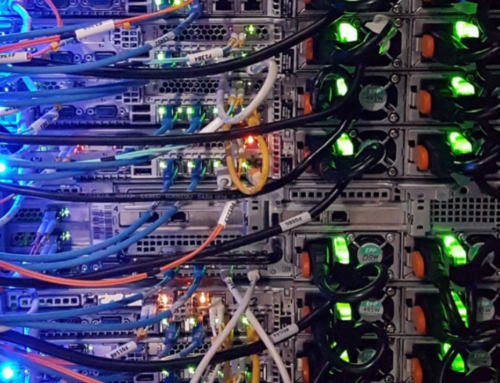Data centers are crucial for so many of the everyday digital services we all rely upon, supporting everything from cloud services to enterprise applications. Maintaining optimal temperature and humidity levels within data centers is essential to ensure smooth operation, extend equipment lifespan, and avoid costly downtime. Here is some important information you should know that explains why precise control of these factors is crucial to your data center’s performance and reliability.
Temperature Regulation
Temperature regulation is a fundamental aspect of data center management. The servers, storage devices, and networking equipment housed in these facilities generate significant amounts of heat during operation. When internal temperatures exceed the recommended range, it can lead to overheating, which in turn may degrade performance and even cause permanent hardware failures.
Most data center hardware is designed to operate within a safe temperature range—often between 70°F to 75°F (21°C to 24°C)—but this can vary depending on equipment density and specific manufacturer guidelines. Efficient cooling systems are therefore vital for preventing overheating. Air conditioning for data centers, in conjunction with precision cooling technologies, keeps the internal temperature stable, mitigating risks like thermal shutdowns, performance bottlenecks, and reduced hardware lifespans.
Humidity Management: Balancing Moisture Levels
While temperature control is crucial, managing humidity levels is equally important in ensuring the longevity and reliability of data center equipment. High humidity levels increase the risk of condensation inside servers, switches, and other critical components. This moisture can lead to electrical shorts, corrosion, and irreversible damage to sensitive electronic parts. On the flip side, low humidity poses its own set of risks, including the buildup of static electricity, which can discharge and damage circuits.
Industry-standard humidity levels for data centers typically fall between 40% and 60%. Advanced humidity control systems work alongside cooling infrastructure to maintain this balance, ensuring neither condensation nor electrostatic discharge threatens your facility’s uptime.
Achieving Optimal Data Center Performance
Modern data centers utilize sophisticated environmental monitoring systems that provide real-time feedback on temperature, humidity, and airflow throughout the facility. This data enables operators to fine-tune environmental conditions, ensuring that specific zones—especially those with higher equipment density—receive the necessary cooling and humidity control. By aligning these conditions with the actual demands of the hardware, data center managers can ensure:
Improved Equipment Reliability: Proper temperature and humidity management reduces the risk of failures, increasing uptime and operational resilience.
Enhanced Energy Efficiency: Fine-tuning cooling systems to target specific areas ensures that energy is used efficiently, lowering overall power consumption and cooling costs.
Prolonged Hardware Lifespan: Maintaining ideal environmental conditions helps prevent thermal stress and corrosion, extending the longevity of critical infrastructure components.
At the end of the day, consistent monitoring and control of temperature and humidity are essential to running an effective, reliable, and energy-efficient data center.
Ready to Optimize Your Data Center?
If you’re looking to improve the reliability and performance of your facility, consider partnering with LDP Associates. Contact us today to take the first step toward a more reliable and efficient data center.






